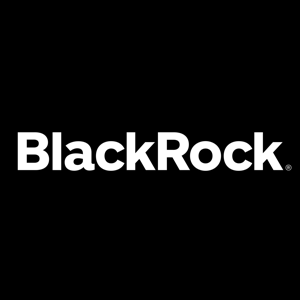BlackRock Sustainable American Income delivers strong results following change in mandate – BlackRock Sustainable American Income (BRSA) has posted its full year results for the 12 months to 31 October 2021. During this period, its NAV was up by 36% while its share price returned 42.4%. This compares with a rise of 35.6% from its benchmark.
The company said following the COVID-19 pandemic outbreak and subsequent ramifications in 2020, the restart of economic recovery gathered pace and companies have beaten analyst expectations on both earnings per share and revenue growth, with the latter having been particularly strong.
BRSA’s revenue earnings per share, based on the weighted average number of shares in issue for the year, amounted to 4.06p, a decrease of 38.9%. Four quarterly interim dividends of 2.00p per share were paid on 29 April 2021, 2 July 2021, 1 October 2021 and 4 January 2022. This is in line with the payments made in the previous financial year. The dividend paid represents a yield of 4.0% on the share price at the year end.
While the company continues to retain a bias to high yielding value stocks, the board expects its underlying income level to be impacted by changes to the mandate, which were first announced in BRSA’s half-year report last year.
The Board proposed in June that the company’s investment mandate be altered to incorporate explicit Environmental, Social and Governance (ESG) objectives, which shareholders overwhelmingly approved in July 2021.
Since this date, the company’s portfolio has changed to reflect the new objective of investing in a manner consistent with the principles of sustainable investing. The exposure to mid-cap companies has also increased and the number of portfolio holdings has reduced.
Meanwhile, following the policy to adopt a more active approach to gearing, with a range of 0% to 10% and a neutral level of 5% of net asset value, BRSA reduced its cash holdings to become substantially fully invested and has therefore been at the lower bound of this new range. However, since the financial year-end and market uncertainty brought on by the emergence of the Omicron COVID-19 variant, the opportunity has been taken to increase the company’s gearing which at 4 February 2022 stood at 2.9%.
Manager’s market overview
U.S. large-cap stocks, as represented by the S&P 500® Index, advanced by 42.9% in US Dollar terms for the year ended 31 October 2021. In Sterling terms, the S&P 500 appreciated by 34.8% during the year.
U.S. large-cap stocks rallied in the fourth quarter of 2020 as election clarity and the emergence of viable COVID-19 vaccines boosted investor optimism. Cyclical value stocks, those most beaten down in the COVID-19 crisis, staged a particularly strong late-year rally as financial markets anticipated an end to global lockdowns and a positive inflection in economic growth. Policymakers also continued to provide accommodative measures to combat the effects of the pandemic. This included passing the US$900 billion COVID-19 Relief Bill, an aid package signed into law in late December 2020, that provided new direct payments to Americans, as well as additional paycheck protection programme loans and unemployment benefits.
Markets encountered bouts of volatility in the early stages of 2021 but ended the first quarter on an upbeat tone, reaching all-time highs. The U.S. economy was fuelled on multiple fronts. Firstly, monetary policy support continued to persist with the Federal Reserve (the Fed) signalling its intention to keep the federal funds rate (i.e. the target interest rate for commercial bank overnight lending) near zero through at least 2023. Secondly, fiscal policy remained stimulative with the signing into law in March 2021 of the American Rescue Plan, a US$1.9 trillion fiscal stimulus package. Thirdly, further progress on vaccine supply and distribution aided a rebound in economic activity levels. These elements stayed in place for the duration of the annual reporting period and functioned as a notable tailwind for financial markets.
U.S. stocks extended their rally in the second and third quarters despite bouts of volatility and investor concerns related to rising inflation, supply chain bottlenecks and the emergence of new COVID-19 variants. For example, broad market indices traded lower in September as investors focused on potential systemic risks in China related to Evergrande, a debt-challenged real estate developer, before posting their strongest month of the year in October. Stronger corporate earnings were the primary driver of rising stock prices, as companies beat consensus expectations on both earnings and revenues, albeit versus easy year-on-year comparisons. Revenue growth was particularly strong, as companies flexed their pricing power in passing through higher input costs to end customers via higher prices.
BRSA : BlackRock Sustainable American Income delivers strong results following change in mandate
